Introduction
In 2021 the total population of Buckinghamshire was estimated to be 553,100, or about 1% of the people in England, at 56,489,800. Buckinghamshire’s population has increased by approximately 9.5% (47,800) between 2011 and 2021, which is about 3% higher than the national increase in population during the same period.
According to data from the Office for National Statistics (ONS), 23.2% (126,804) of the total population in Buckinghamshire are children aged under 18, 57.8% (316,142) are adults aged 18 to 64 and 19.0% (104,114) are aged 65 and over; 2.8% (15,315) of the resident population are 85 and over.
The last census for which full results are available was in 2011 and provided insight into the ethnicity of Buckinghamshire’s population. In 2011 86.4% of people identified as white, 8.6% identified as Asian or Asian British, 2.1% identified as black or black British, 2.4% identified as mixed-race, and 0.5% of the population identified as another ethnic group.
Data

2021 Census update
The census takes place every ten years. It gives a picture of all the people and households in England and Wales. The first 2021 Census results, including high-level population figures at the local authority level, were published on 28th June 2022. This section outlines the headline statistics for Buckinghamshire.
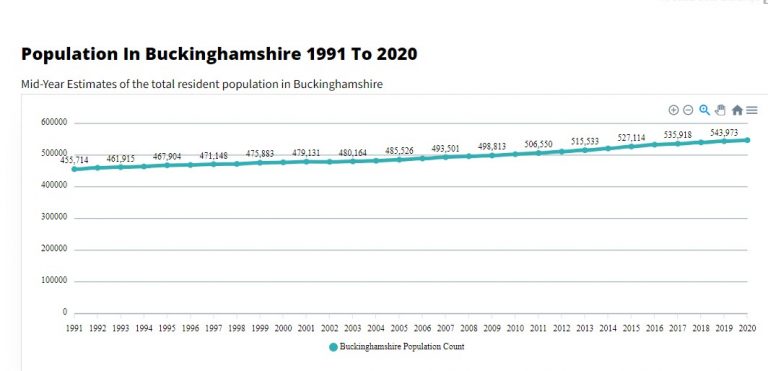
Population size
The chart shows the size of the population in Buckinghamshire and how it has changed since 1991 when the current recording methodology began.
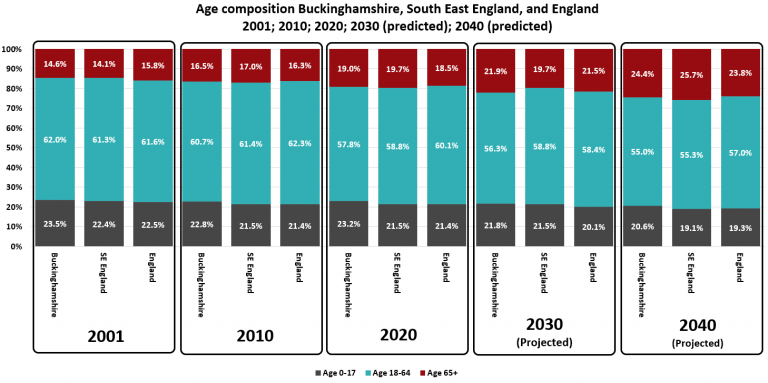
Age distribution
The chart shows the age distribution of children (0-17 year-olds), working-age people (18-64 year-olds) and older people (65+ year-olds) in Buckinghamshire, South East England, and England.
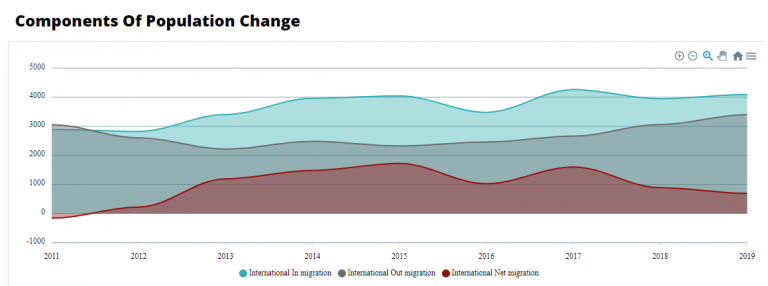
Components of population change
The charts in this section show the components of population change. The components are natural change (births and deaths); internal UK migration (people moving in and out of Buckinghamshire from other parts of the UK), and international migration.

Population pyramid
A population pyramid shows the distribution of age and sex in a population by visualising the proportion of people that fall into each category.
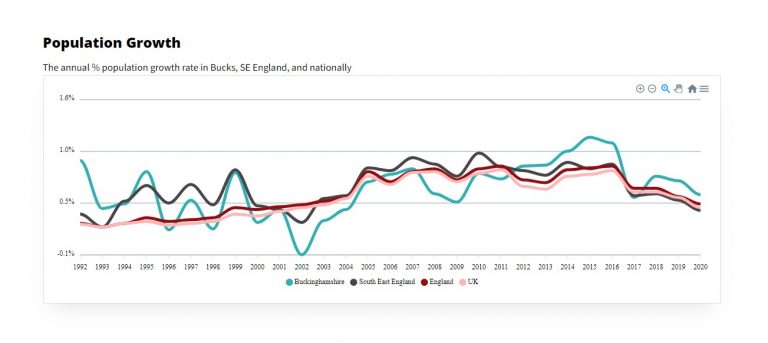
Population growth
The chart shows how Buckinghamshire’s population has increased (and decreased) year on year. It also shows the growth rate in South East England, England, and the UK.
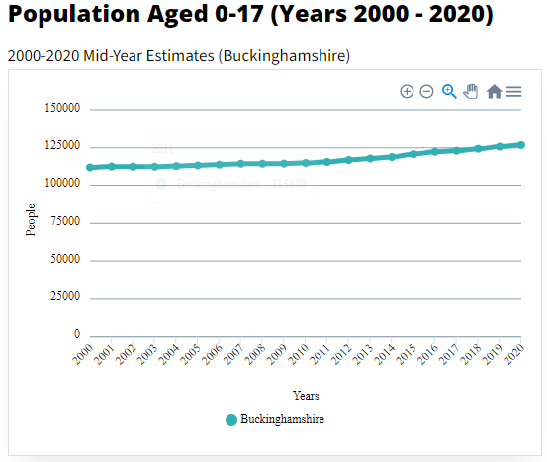
Population of 0-17 year olds
The data show how the population of children (aged 0-17) in Buckinghamshire has increased over the last two decades. The most recent decade between 2010 and 2020 has witnessed the largest increase.
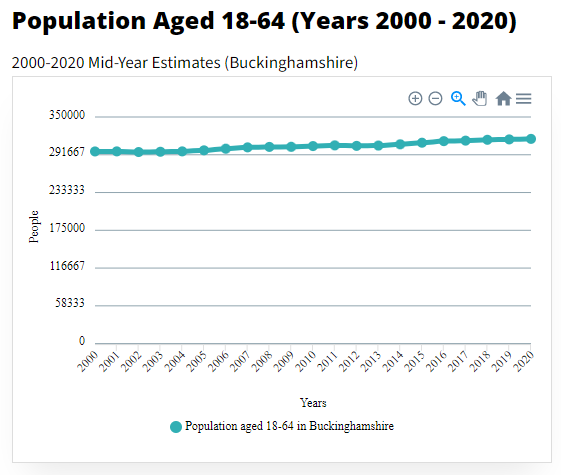
Population of 18-64 year olds
The data show how the working-age population (aged 18-64) in Buckinghamshire has changed over the last two decades and how it is projected to change over the coming two decades to 2040.
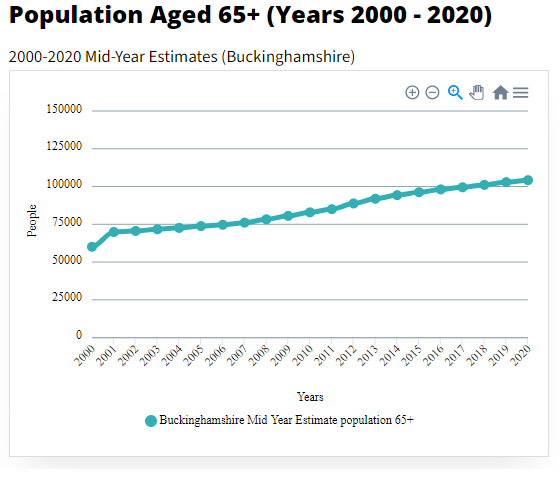
Population of 65+ year olds
The charts show how the number of residents aged 65+ has increased over the last two decades and how it is predicted to continue to rise over the next two decades.

Old Age Dependency Ratio
The chart shows the historic and projected Old-Age Dependency Ratio (OADR) in Buckinghamshire. The OADR has risen steadily in the last two decades and is projected to continue to rise.

Ethnicity
The data table shows ethnicity in Buckinghamshire from the 2021 Census. The county had a lower proportion of people from a white ethnic background than South East England and England. The county also had a higher proportion of Asian, Asian British or Asian Welsh and Mixed or Multiple ethnic groups than South East England and England.
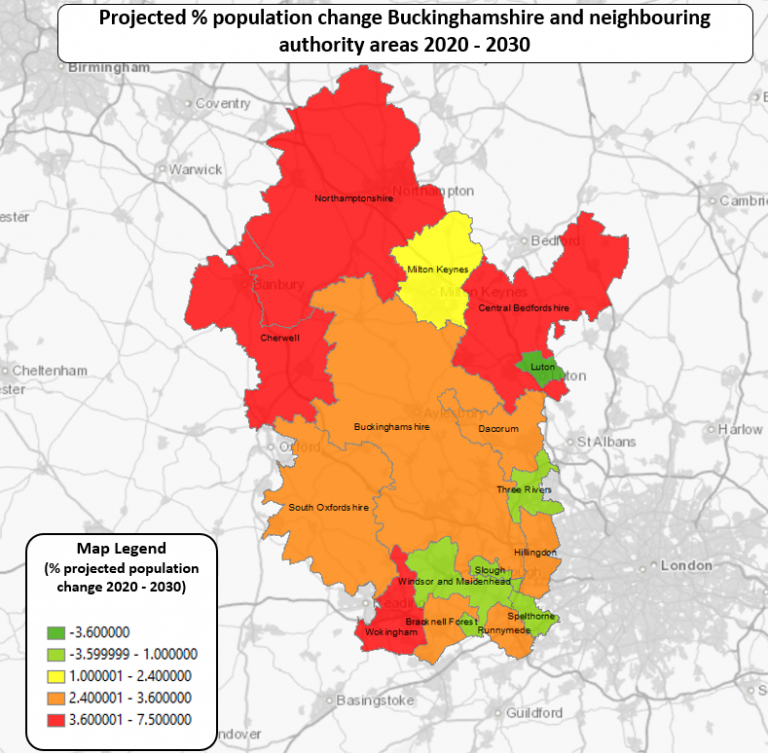
Population change in neighbouring areas
The charts and map show the projected population changes from 2020 to 2030 in the authority areas neighbouring Buckinghamshire.
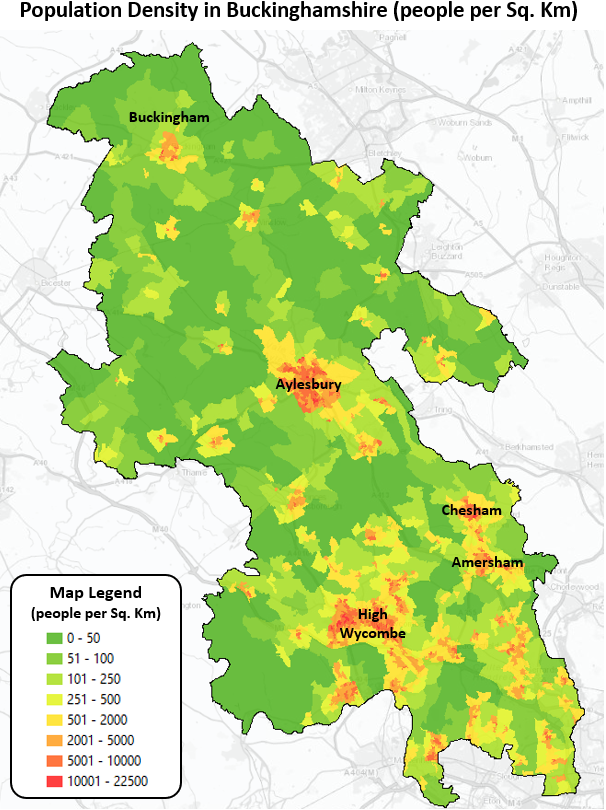
Population density
The choropleth (shaded) map shows population density in the county by census output areas. The red and orange areas have a high density of people per square kilometre. The green areas are sparsely populated with the lowest density of people per square kilometre.








